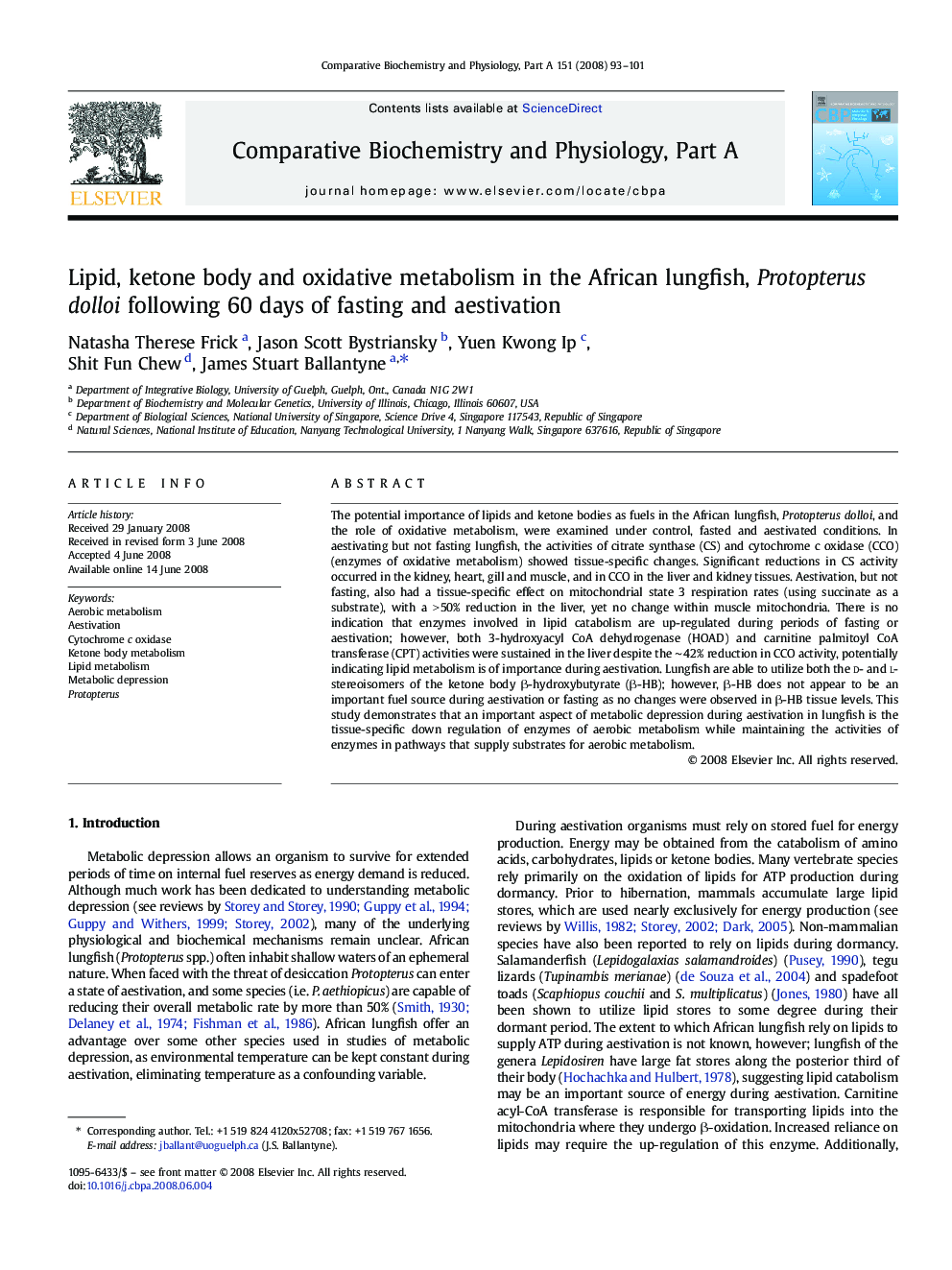| Article ID | Journal | Published Year | Pages | File Type |
|---|---|---|---|---|
| 1973497 | Comparative Biochemistry and Physiology Part A: Molecular & Integrative Physiology | 2008 | 9 Pages |
The potential importance of lipids and ketone bodies as fuels in the African lungfish, Protopterus dolloi, and the role of oxidative metabolism, were examined under control, fasted and aestivated conditions. In aestivating but not fasting lungfish, the activities of citrate synthase (CS) and cytochrome c oxidase (CCO) (enzymes of oxidative metabolism) showed tissue-specific changes. Significant reductions in CS activity occurred in the kidney, heart, gill and muscle, and in CCO in the liver and kidney tissues. Aestivation, but not fasting, also had a tissue-specific effect on mitochondrial state 3 respiration rates (using succinate as a substrate), with a > 50% reduction in the liver, yet no change within muscle mitochondria. There is no indication that enzymes involved in lipid catabolism are up-regulated during periods of fasting or aestivation; however, both 3-hydroxyacyl CoA dehydrogenase (HOAD) and carnitine palmitoyl CoA transferase (CPT) activities were sustained in the liver despite the ∼ 42% reduction in CCO activity, potentially indicating lipid metabolism is of importance during aestivation. Lungfish are able to utilize both the d- and l-stereoisomers of the ketone body β-hydroxybutyrate (β-HB); however, β-HB does not appear to be an important fuel source during aestivation or fasting as no changes were observed in β-HB tissue levels. This study demonstrates that an important aspect of metabolic depression during aestivation in lungfish is the tissue-specific down regulation of enzymes of aerobic metabolism while maintaining the activities of enzymes in pathways that supply substrates for aerobic metabolism.
